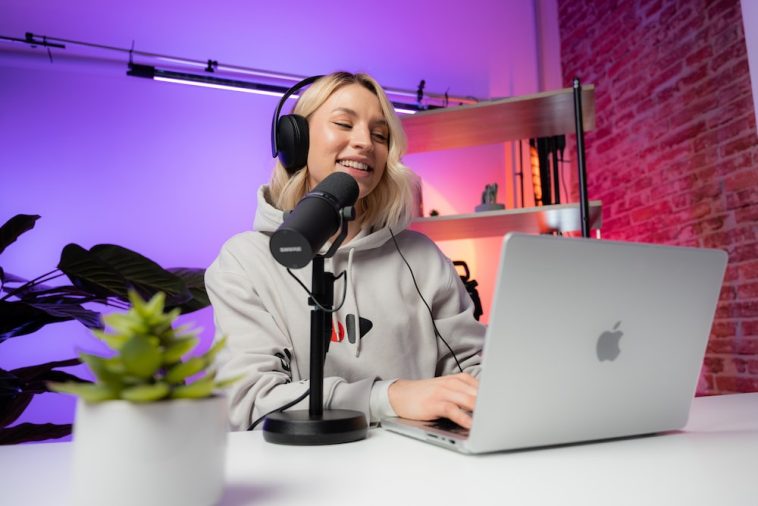Introduction.
Starting a podcast might be simple enough—find a topic, get some recording gear, and start talking. But when it comes to making money from your podcast?
That’s a whole different game. Turning those passionate conversations into profit takes more than just pressing record.
The good news is that it’s entirely possible to monetize a podcast in a way that’s genuine, sustainable, and rewarding.
In this guide, I’ll cover the most effective ways to start earning from a podcast, the advantages and challenges of each method, and answer some common questions.
So whether your goal is to cover costs, earn side income, or build a full-fledged business, these strategies can help you get there.
How Do I Monetize a Podcast?
1. Sponsorships and Ads
One of the most popular ways to earn from a podcast is through sponsorships. Companies are eager to reach niche audiences, and podcasts offer an ideal format.
When you integrate a company’s message into your podcast, it can lead to real engagement—if done right.
How It Works
In simple terms, sponsors pay you to mention their product or service on your show. The ad can take different forms:
- Pre-Roll Ads: At the start of the episode
- Mid-Roll Ads: In the middle, often the most valued spot due to listener attention
- Post-Roll Ads: Toward the end of the episode
Pros
- Scalability: More listeners mean higher ad revenue.
- Ease of Integration: Short, casual mentions keep it seamless for listeners.
Cons
- Listener Fatigue: Too many ads might turn some people away.
- Eligibility: Many sponsors look for a minimum audience size before partnering.
2. Listener Support (Donations and Crowdfunding).
When people genuinely value your content, they may be willing to contribute financially to support it. Crowdfunding platforms like Patreon, Ko-fi, or Buy Me a Coffee allow listeners to make small donations, sometimes for exclusive perks or content.
How It Works
Listeners pledge a certain amount monthly, or they make one-off contributions. For extra incentives, you might offer:
- Bonus Episodes: Exclusive content only for supporters
- Behind-the-Scenes Content: Insight into the making of episodes
- Merch Discounts: A small thank-you for their support
Pros
- Direct Support: Fans contribute because they value your content.
- Community Building: Creates a more engaged, dedicated listener base.
Cons
- Income Variability: Donations can be inconsistent.
- Effort: May require additional content or perks.
3. Merchandising.
Selling branded merchandise is another way to turn a podcast into a revenue source. Fans who resonate with your podcast might enjoy a T-shirt, mug, or sticker with your logo or a catchphrase from the show.
How It Works
Through print-on-demand services like Teespring or Printful, you can create and sell custom merch without upfront inventory costs. Simply design, set up a storefront, and share it with your audience.
Pros
- Creative Control: A chance to get creative with designs.
- Passive Revenue: Set up once, and the store runs itself.
Cons
- Low Margins: Merchandise usually has small profit margins.
- Marketing Needed: Requires promotion to make sales.
4. Premium Content and Subscriptions.
Another option is creating premium content accessible only to paying subscribers. Platforms like Apple Podcasts or Spotify let podcasters offer paid subscriptions where listeners get exclusive episodes, ad-free listening, or early access.
How It Works
Listeners pay a monthly fee for extra perks. With a consistent, loyal following, premium content can become a steady revenue stream.
Pros
- Consistent Income: Subscription models provide steady revenue.
- Control: Decide exactly what to offer as premium content.
Cons
- Extra Work: Creating additional, high-value content takes time.
- Smaller Reach: Only accessible to paying subscribers, which could reduce overall exposure.
5. Affiliate Marketing.
Affiliate marketing involves promoting other companies’ products and earning a commission on any sales made through your referral links. This works well if you can recommend products or services genuinely relevant to your listeners.
How It Works
Sign up with an affiliate program related to your niche, such as Amazon Associates or programs through affiliate networks like ShareASale. Mention these products naturally within episodes, share links, and get paid for any purchases made.
Pros
- Flexible and Scalable: Works with small and large audiences.
- No Upfront Costs: Earn without needing your own products.
Cons
- Requires Transparency: Listeners can feel misled if it’s too salesy.
- Varied Income: Commissions can be small, especially for low-priced items.
6. Live Events and Workshops.
Podcasts that build a community around their content often have loyal listeners who are excited about live events.
Whether it’s a small Q&A session, a live recording, or even a full-scale workshop, events are an opportunity to connect with listeners in a more personal way—and monetize the experience.
How It Works
Sell tickets for live virtual or in-person events, where listeners get to interact with you and the show’s content directly. These events can be structured as:
- Live Recordings: Fans get a front-row seat to your recording process.
- Workshops: Dive into specific topics or skills related to your niche.
- Fan Meet-Ups: A fun, informal way to connect with your community.
Pros
- Engagement: Builds stronger listener relationships.
- Unique Content: Events can generate content for future episodes.
Cons
- Planning Needed: Events take organization and time.
- High Effort: Requires energy and sometimes upfront costs.
FAQs about Monetizing a Podcast
Q: When should I start monetizing my podcast? A: Generally, wait until you have an engaged audience. For sponsorships, having around 500-1,000 downloads per episode is often the starting point for many advertisers.
Q: Do I need a big audience to make money? A: No, you don’t need millions of downloads! With a niche audience, you can explore options like listener support or affiliate marketing that don’t depend on a massive following.
Q: How much can I make from podcast sponsorships? A: Payment varies based on the number of downloads. Industry rates range from $18 to $50 for every 1,000 downloads, but this depends on your niche and engagement.
Q: Do ads affect listener retention? A: Not necessarily. Keep ads relevant and avoid overloading the show. Mid-roll ads often perform best, as listeners are already invested in the content.
Conclusion
With a little creativity and planning, a podcast can become a valuable revenue source. From sponsorships to live events, there are options that fit various podcast styles and audience sizes.
What’s the one monetization method you’re most interested in trying?





GIPHY App Key not set. Please check settings